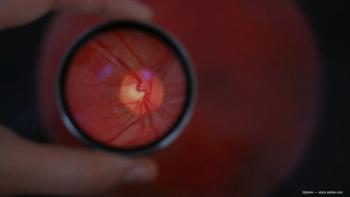
AAO 2025: Sahar Bedrood, MD, PhD, shares early experience with the Leos endoscopic laser
Bedrood describes improved visualization of the ciliary body, efficient setup, and favorable postoperative outcomes.
Sahar Bedrood, MD, PhD, discussed her early clinical experience with the Leos endoscopic laser system at the American Academy of Ophthalmology 2025 annual meeting, October 18-20, in Orlando, Florida. “I’ve had the opportunity to be an early user for the Leos endoscopic laser,” she said, introducing her observations from multiple surgical cases. Bedrood focused on how the system has affected visualization, precision, and workflow during endoscopic cyclophotocoagulation (ECP) procedures.
“I have noticed a tremendous difference in the visualization of the ciliary body,” said Bedrood, who is in private practice at Advanced Vision Care, Los Angeles, California. “Upon entry, right away, you can see that you can very clearly see all the anatomy.” She added, “You can even see all the lumps and bumps of the ciliary body down to really, really minutia detail, which is incredible.”
According to Bedrood, this enhanced clarity translates directly to more precise energy application: “That kind of view allows me to target the tissue better, more precisely and perhaps even use a little bit less energy than before because I can see it better.”
She noted that the system’s single-use handpieces eliminate the optical degradation that often occurs with reusable scopes. “All of the handpieces are single use, so there is no more of that crud that builds up on the end of that scope, which we have all experienced if we’ve done ECP in the past.” This contributes to what she described as a more streamlined surgical process: “You really have this very clear view, a very efficient way to see what I need to see, laser it, and then get out of the eye.”
Discussing outcomes from her initial cases, Bedrood noted encouraging early results. “Anecdotally, since I’ve used it on a number of patients, I have noticed that the patients have done really well afterwards. I have not noticed any significant inflammation that would cause me to worry. These patients’ pressures have lowered. They’re not inflamed as much in the eye.” Although she noted that no formal comparative study has been completed, she described one interesting observation: “I have done one where I use the older laser and then I use the Leos system on the same person and the 2 eyes were a little bit different and again that was an interesting outcome for me to see.” She added that she looks forward to future clinical trials “to actually really identify if there’s a difference.”
Bedrood also highlighted operational advantages for surgical staff. “The Leos system has really changed in the way the technicians can use it,” she said. “In the past, the older system was very difficult to use. You usually had one technician in your whole surgery center that was able to know how to use it and this is completely different. It is literally one button: you turn it on, one click, and it's a really clear view.”
She described the system as being mobile, with a small footprint in the operating room—“not a tremendous task, which is really important because as you're trying to get through cases and you're setting up for other cases, you want something that's easy to set up and our OR staff certainly appreciate it and I certainly do as well.”
Newsletter
Don’t miss out—get Ophthalmology Times updates on the latest clinical advancements and expert interviews, straight to your inbox.








































